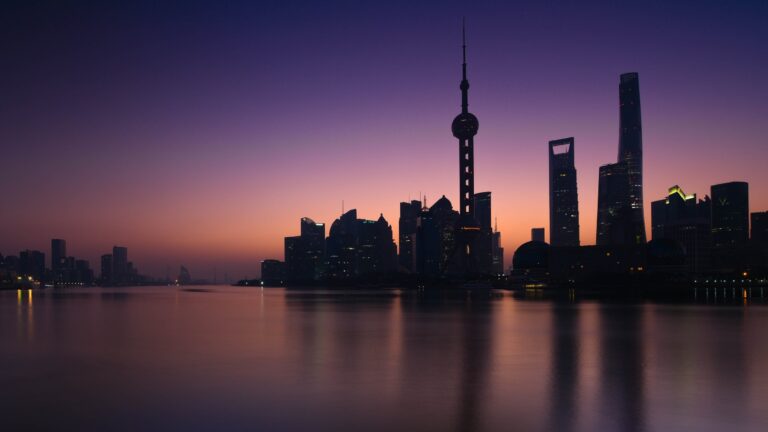Editor’s note: This is the second article we have published this fall mourning the passing of the older generation of Chinese Christian leaders, the believers who steered the Chinese church through the dark days of the Cultural Revolution and severe suppression of their faith. Many of these believers spent years in jail for their faith, and younger Chinese Christians look up to them for their sincerity, piety, and faithfulness as they walked the road of the cross and followed Jesus through suffering.
On the evening of October 4th, news came from Guiyang: Elder An Ning, at the ripe old age of 97, had peacefully gone home to be with the Lord.
Once, I planned to write Elder An’s biography. But I have lived abroad for many years, and have no prospects of returning home, so this project is destined to remain unfinished. This short article is a small token of remembrance – a fragrant offering of my heart – to honor this elder in the faith.
A World of Peace
Elder An’s name complete name was “An Ning.” Taken together, his name means “peaceful” or “tranquil.” Elder An was born with a silver spoon in his mouth, coming from a family of Yi[1] chieftains. Although Guizhou Province was remote and impoverished, it wasn’t really the way people imagined it.
Elder An Ning, at the ripe old age of 97, had peacefully gone home to be with the Lord.
Guizhou became a province centuries ago during the Ming Dynasty,[2] at which point the Tusi system was established.[3] The Tusi system combined imperial rule with local governance. Imperial officials administered the towns, but other areas were entirely self-governed by the existing Yi landlords. Lesser landlords were called Tumu, and greater ones were known as Tusi. These Yi landlords were not only landlords and slave owners, they were also imperial officials, and inherited their power over the judicial system, military, and administration of their area. When Elder An was born, half of Guizhou belonged to his family.
The old saying goes, “Heaven is high, and the emperor is far away.” An Ning was born a local emperor. This saying was the reality of his life.
An Ning’s Tusi family was anything but unsophisticated. They were among the first in Guizhou, perhaps even in China, to possess vision, ambition, and intellectual curiosity. The An family produced a number of intellectuals and revolutionaries. Some joined the Tongmenghui[4] and worked along Sun Yat-sen. Some served as envoys to Japan; some were army and division commanders in the uprising against Yuan Shikai; others were teachers and students in cultural and educational institutions. An Ning’s father graduated from the Imperial University of Peking. An Ning followed in his father’s footsteps and attended the same school, which by then had been renamed Peking University.
As a child, An Ning heard hymns, and saw his Miao slaves worshipping the Lord. But even as a child, he was already the “young master.”” He knew about the Lord, [but] didn’t come to truly know him through these encounters.
The An family were some of the first Yi Tusis in Guizhou to encounter Christianity. George Clarke, a missionary with China Inland Mission, was stationed in Anshun. A chance encounter led to the gospel being shared among the Miao people – and at the time, most Miao were enslaved by Yi Tusis. When a woman in An’s family contracted tuberculosis, the family heard from their Miao slaves that the missionary had access to Western medicine. In desperation, the An family asked George Clarke to bring a doctor to save her life. I don’t know if An Ning’s aunt’s life was saved, but this incident opened the door for missionary work among the Yi people.
As a child, An Ning heard hymns, and saw his Miao slaves worshipping the Lord. But even as a child, he was already the “young master.” His presence often made the Miao believers uneasy. So while he knew about the Lord, he didn’t come to truly know him through these encounters.
That happened later, when he was studying at Peking University. In those days, many students and faculty attended meetings at Wang Mingdao’s “Christian Tabernacle” in Shijia Hutong. An Ning was one of those students. After the Communist victory [when Mao Zedong and the People’s Liberation Army established the modern People’s Republic of China in 1949], the Three-Self Patriotic Movement began. Wang Mingdao became a target of criticism, and the authorities pressured his congregation to denounce him. Wang Mingdao himself wavered, even writing a confession.
An was sentenced to “re-education through labor.”” His sentence lasted 25 years, turning his dark hair, white.
But An Ning did not waver. His statement was, “The new society is the end of Shijia Hutong.” Of course, this statement was not acceptable. Although he hadn’t engaged in any counter-revolutionary speech or actions, in that era of trumped-up charges, An was sentenced to “re-education through labor.” His sentence lasted 25 years, turning his dark hair, white.
Zhang Tan is a Chinese Christian who lives outside of China, and describes himself as a weak servant of Jesus.
[1] The Yi people live in southwest China, and until as late as the 1950s, their society was based on a ruling class and two lower slave classes.
[2] The Ming Dynasty ruled China from 1368 to 1644. Guizhou was formally made a province in 1413.
[3] This system relied on appointing certain locals as chieftains who ruled over their fellow peoples.
[4] The Tongmenghui was a secret society formed in Japan by Sun Yat-sen and others with the goal of overthrowing the Qing dynasty.
Pray today for many Yi and Miao peoples of southwest China to come to know and follow the Lord.































